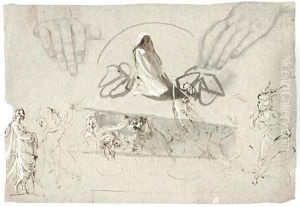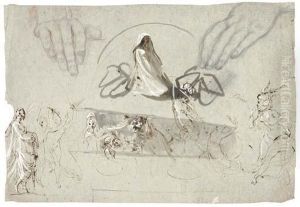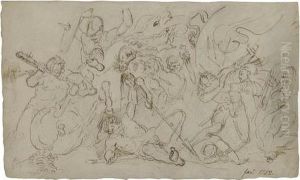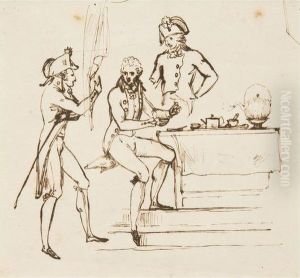William Lock Of Norbury Paintings
William Lock of Norbury was a British artist known primarily for his work as an amateur draughtsman and a patron of the arts rather than for a significant body of work of his own. Born in 1767, Lock hailed from a family with sufficient wealth to allow him to pursue his interests in art and culture without the need for professional employment.
Lock's father, also named William Lock, was a noted patron of the arts and a collector, which likely influenced the younger Lock's artistic interests and connections within the art world. The Lock family's residence in Norbury Park, Surrey, became a known center for artistic and literary figures of the period.
While William Lock of Norbury did not achieve the kind of fame that many of his contemporaries did, he was nonetheless respected in his time for his taste and his contributions to the arts. His works, which included drawings and sketches, were appreciated for their style and technique, although they were not widely disseminated or acclaimed.
Lock's life as a patron and amateur artist was typical of many gentlemen of his era, who had the means to pursue art as a leisure activity. His legacy is more about the support and influence he provided to the artists of his time than his own artistic output. Today, he is a lesser-known figure, and most of the information about him comes from his interactions with and patronage of more famous artists and cultural figures.
William Lock of Norbury passed away in 1847. As his fame was not widespread, his death did not make a significant impact on the art world. Nevertheless, his role as a patron during his lifetime contributed to the culture of the arts in Britain during the late 18th and early 19th centuries.



